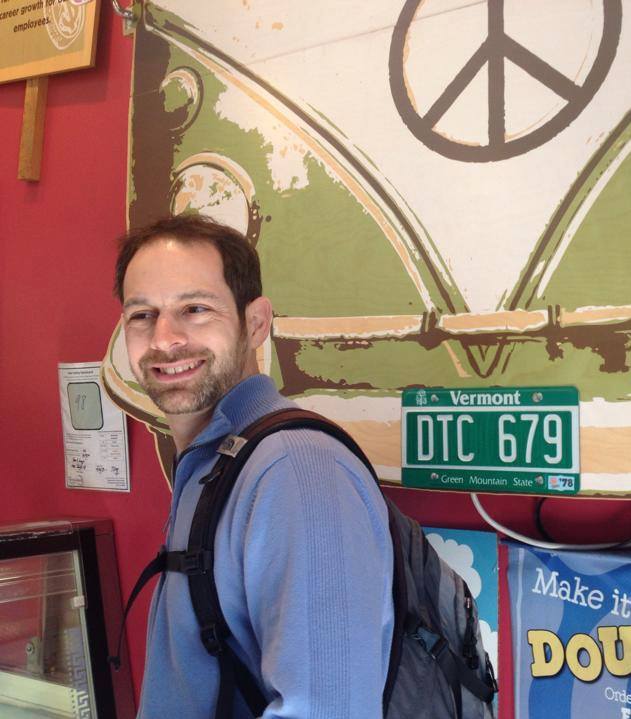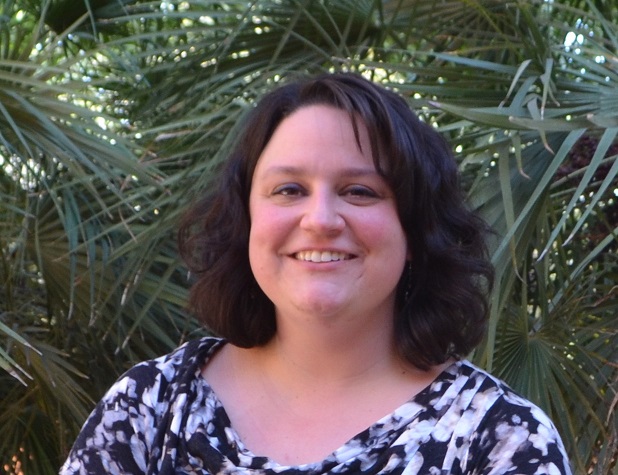Meet LPL Staff: Ed Audi and Annie Wargetz
 Ed Audi is a Staff Engineer with the Cassini VIMS team. His career at LPL began in 2013, but his journey to Tucson started in 1997, when he decided to leave the cold weather of his native Vermont and head west. After working in the telecommunication industry for a time, Ed made his way to Tucson in 2001 to work at the University of Arizona (UA) as a telescope operator at the old 12-meter radio telescope on Kitt Peak. In 2003, he migrated to a position with Pegasus Solutions, a Scottsdale software company, and then to graduate school at the University of Tulsa. But, he says, "I didn't want to leave Arizona and I always knew I'd come back!"
Ed Audi is a Staff Engineer with the Cassini VIMS team. His career at LPL began in 2013, but his journey to Tucson started in 1997, when he decided to leave the cold weather of his native Vermont and head west. After working in the telecommunication industry for a time, Ed made his way to Tucson in 2001 to work at the University of Arizona (UA) as a telescope operator at the old 12-meter radio telescope on Kitt Peak. In 2003, he migrated to a position with Pegasus Solutions, a Scottsdale software company, and then to graduate school at the University of Tulsa. But, he says, "I didn't want to leave Arizona and I always knew I'd come back!"
His journey back to Tucson would take nearly six years, during which he worked for the federal government in software development and network operations roles. "Eventually," says Ed, "I'd had enough of the East coast and decided to find my way back out west." He was hired by Tucson's Universal Avionics to maintain and enhance aircraft navigational database software. While this was a good opportunity and he was excited to be back in Arizona, Ed always had an interest in working in the space industry and so continued to look for openings at UA. We're glad that Ed eventually found a home at UA and LPL: "VIMS is a spectrometer, and I work with JPL to ensure that the instrument collects the data that our scientists require. It's a good role for me because it allows me to work with a spacecraft and also make use of my IT and software development experience."
 Annie Wargetz joined the LPL family in January 2015 as the new Social Media Lead for the OSIRIS-REx mission. She is a member of the Communications and Public Engagement team and manages the social media presence for the mission. Annie is excited to be interacting with the OSIRIS-REx team and helping to tell the mission’s story. Prior to arriving in Tucson, Annie was a member of the Communications team for the Orion Program based at NASA’s Johnson Space Center and designed to serve as the exploration vehicle that will carry the crew to space, provide emergency abort capability, sustain the crew during the space travel, and provide safe re-entry from deep space return velocities. She worked with program management, scientists, and engineers to learn about the spacecraft and its EFT-1 (Exploration Flight Test-1) mission, an uncrewed test flight that took place on December 5, 2014, sending Orion through the Van Allen belt twice, where it experienced high periods of radiation, reaching an altitude of 3,600 miles above Earth at speeds of 20,000 mph and weathering temperatures approaching 4,000 degrees Fahrenheit as it entered Earth’s atmosphere. Annie turned the knowledge into communications products, including lithographs, and interacted with the public at various events to get them excited about the spacecraft. Annie says she is honored to be a part of LPL and OSIRIS-REx mission.
Annie Wargetz joined the LPL family in January 2015 as the new Social Media Lead for the OSIRIS-REx mission. She is a member of the Communications and Public Engagement team and manages the social media presence for the mission. Annie is excited to be interacting with the OSIRIS-REx team and helping to tell the mission’s story. Prior to arriving in Tucson, Annie was a member of the Communications team for the Orion Program based at NASA’s Johnson Space Center and designed to serve as the exploration vehicle that will carry the crew to space, provide emergency abort capability, sustain the crew during the space travel, and provide safe re-entry from deep space return velocities. She worked with program management, scientists, and engineers to learn about the spacecraft and its EFT-1 (Exploration Flight Test-1) mission, an uncrewed test flight that took place on December 5, 2014, sending Orion through the Van Allen belt twice, where it experienced high periods of radiation, reaching an altitude of 3,600 miles above Earth at speeds of 20,000 mph and weathering temperatures approaching 4,000 degrees Fahrenheit as it entered Earth’s atmosphere. Annie turned the knowledge into communications products, including lithographs, and interacted with the public at various events to get them excited about the spacecraft. Annie says she is honored to be a part of LPL and OSIRIS-REx mission.

